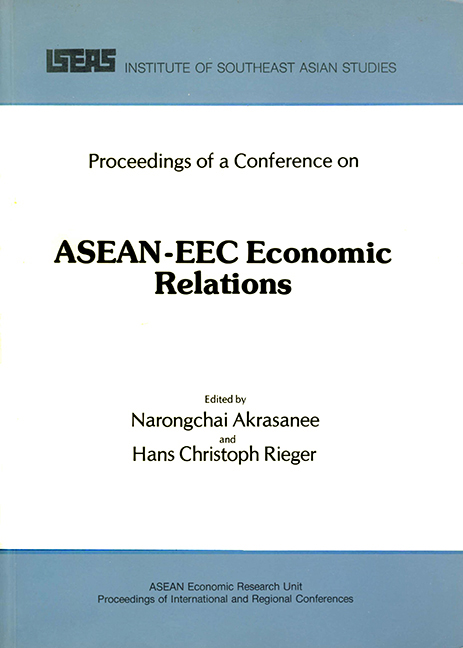BUILDING BRIDGES AND OPENING DOORS
Published online by Cambridge University Press: 21 October 2015
Summary
ASEAN (the Association of Southeast Asian Nations) and the EC (the European Community) are two groups of nations, one in Asia, the other halfway across the world in Europe, with a combined population of more than 500 million people;
- both committed to full, voluntary co-operation;
- constituting areas of relative stability at a deeply troubled time in history;
- together representing a tremendous potential for good in the world.
In this context, the convening of this Conference is timely and most welcome.
I feel greatly honoured to have been invited to participate in this important Conference, together with such a distinguished group of scholars and experts from Europe and Asia. Various aspects of ASEAN-EC economic relations will be discussed in depth during the next three days. It may be useful at this opening session, as part of the context of the ensuing exchanges of views, to recall the brief history of what is commonly described as the ASEAN-EC Dialogue in the light of the distinctive concerns and characteristics of the two co-operating communities.
Structurally, ASEAN and the EC present a study in contrast. The European Economic Community was formally established by the Treaty of Rome in 1957 with centralized community institutions and well defined supra-national objectives. It has since become a model for structuring, as well as a reference point for evaluating the performance of other regional organizations. ASEAN, on the other hand, began life as a loose inter-governmental association under the Bangkok Declaration of 1967, and while its institutions have evolved in response to the needs of its expanding activities they have remained highly decentralized, geographically and sectorally.
With its basic aims expressed in general terms in the Bangkok Declaration, ASEAN co-operation in its initial stages was largely exploratory. Strong centralized institutions were felt to be unnecessary, perhaps even inimical, to the fostering of the substance of co-operation. Organizational flexibility became a hallmark of ASEAN; it followed a cautious approach to institutional change.
- Type
- Chapter
- Information
- ASEAN-EEC Economic Relations , pp. 1 - 8Publisher: ISEAS–Yusof Ishak InstitutePrint publication year: 1981



